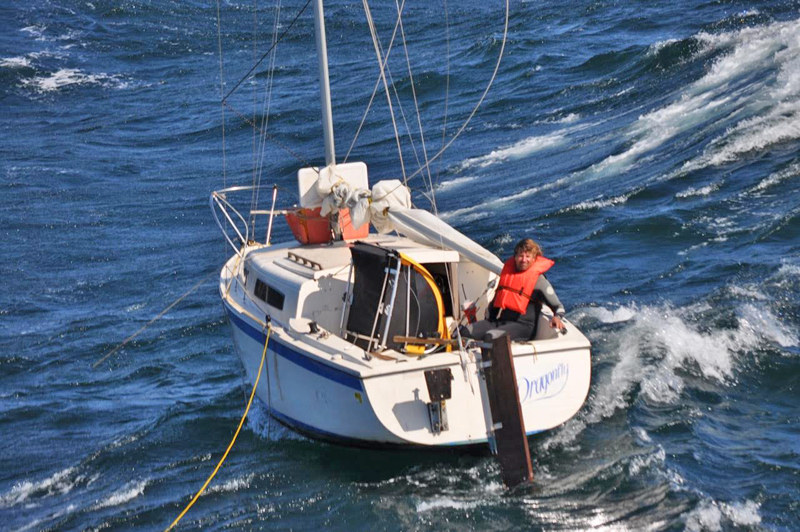
Offshore Priorities

You may think it was foolhardy for the solo sailor pictured above to venture into the rough waters surrounding San Miguel Island (24 miles south of Point Conception) in his engineless, 23-ft pop-top sloop — especially since he had to be rescued by the Coast Guard. But we have to give him credit for having the foresight to have an Emergency Position Indicating Radio Beacon (EPIRB) on board Dragonfly. Without it, this story may have had a different ending.
The unidentified male sailor reportedly activated his EPIRB when his anchor dragged in 8- to 10-ft seas. Evidently he had no functioning radio on board, as he wasn’t able to communicate with Coast Guard rescue personnel until they dropped him a handheld VHF from their helicopter. Although the little sloop’s mast and shrouds appear to be intact in the photo, the singlehander told his rescuers that he was unable to make sail, as his mast was damaged.
Most offshore sailors regard their EPIRB as an absolutely essential piece of equipment — even more important than a life raft. If you’re unfamiliar with the concept, such devices transmit coded signals that uniquely identify the vessel in distress to the nearest rescue coordination center via satellite. The good news is that the cost of EPIRBs has dropped dramatically since they were first introduced, and there are now several smaller, personal EPIRB-like devices that are even cheaper, such as the DeLorme inReach and the SPOT Messenger.
Since EPIRBs were first introduced in the 1970s, more than 20,000 people have been rescued worldwide. If you’re heading offshore this fall, you really can’t afford not to carry some sort of satellite distress device aboard.
